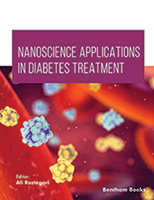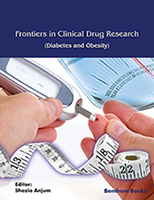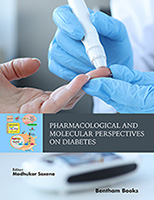The incidence of both type 1 (T1D) and type 2 diabetes (T2D) has increased over the past few decades and is frequently described as an epidemic. It is now recognized that loss of β-cell mass occurs in both forms of diabetes, through autoimmune destruction in the case of T1D and by exhaustion in the case of T2D. Despite current treatments, blood glucose levels are not restored to normal and this leads to serious injury in several organ systems. Ideally it should be possible to treat or reverse both forms of diabetes by re-establishing sufficient functioning β-cells to maintain normoglycemia. There is general agreement that the cells in the adult pancreas can regenerate, but the routes by which this occurs remain controversial. New β-cells are produced early in life by replication of existing cells, but it is less clear how β-cells could be produced naturally or induced in adults through post-injury ductal neogenesis, activation of resident progenitors/stem cells or transdifferentiation of other non-β-cells (e.g., α-cells or acinar cells). A further complication is understanding to what extent these processes are influenced by environmental conditions.
It has recently been appreciated that terminally differentiated and stem/progenitor cells can differentiate into other cells in the pancreas, consistent with the idea of plasticity in cell fate that depends in part on modification of developmental programs by environmental factors [1]. The fate of cells depends on the type of stress encountered, for example pregnancy, metabolic demand due to hyperglycemia and insulin resistance (glucotoxicity), or ectopic expression or deletion of lineage specific factors.
The importance of restoring lost β-cell mass in T1D has been demonstrated by transplanting islets from cadaveric donors. Unfortunately, this solution is only temporary, requires the recipient to be on powerful immunosuppressive drugs and has side effects. Further constraints are the requirement for 2-3 pancreata/recipient and the limited number of pancreata available for transplantation. Hence, a strong research effort is underway to find other sources of β-cells. These include transplanting pig islets, promoting transdifferentiation of non-β-cells into functioning, insulin-producing β-like cells or enhancing proliferation, maintenance and function of remaining β-cells. Several attempts have been made to develop functioning β-cells from embryonic or adult pluripotent stem cells. However, most reports described the production of immature β-like cells from human pluripotent stem cells that did not respond normally to glucose. A recent report from the Melton group described the in vitro production from human embryonic stem cells of glucose-sensitive, insulin-producing β-cells that resemble mature β-cells [2]. It has been pointed out that the basis of this (and other) attempts to find new sources of β-cells comes from a vastly improved and expanded knowledge of pancreas developmental biology [3] and the conditions required to change cell fate, areas which are addressed in this e-book. As with any discovery, there is good news and bad news. The use of embryonic stem cells still raises ethical concerns and there are technical issues to overcome before such a therapy can be considered for use in the clinic. Others must replicate these findings. It must also be remembered that these cells do not have the exact genetic profile and they are not identical copies of β-cells in situ [3]. It is unclear what will be the long term effects of transplanting such cells in patients. As with any “replacement” β-cells, they must be protected from the host’s immune system. To do this, they will likely be placed in protective capsules that are themselves the target of a fibrotic process in the body that blocks the exchange of nutrients and insulin across the membrane. In short, it will be a while before these cells are ready for prime time.
Many questions remain unanswered regarding β-cell plasticity. Is it only a subset of cells of a certain lineage (e.g., acinar) that respond to external stress and express transcription factors that promote self renewal or multi-potency directly or through de-differentiation? An ever present danger is the potential for these processes to go unchecked if fate constraints are lost, leading to cancer. It has been pointed out that it is difficult to evaluate transdifferentiation per se because the characteristics that reflect the extent of the new cell’s maturity and stability of the phenotype are unclear [1]. Does the phenotype of these new cells differ from that of the cells that occur during development?
The editor, Dr. David Hill, has brought together experts in the field who provide extensive and sometimes provocative state-of-the-art discussions of various key aspects of β-cell function and plasticity in health and diabetes. The book is divided into three sections. In the first section entitled: “Origins and developmental biology of β-cells”, Dr. Bertrand Duvillié and colleagues (Paris) review advances in understanding the hierarchy of transcription factors and discuss the influence of growth factors, partial oxygen pressure and nutrients in the intrauterine environment on β-cell maturation. This is followed by Aaron Cox’s (Houston) discussion of the role of aging on β-cell development and how the decline in β-cell proliferation is affected by age-related impairment in signal transduction, altered cell cycle progression and epigenetic regulation of genes is likely to affect attempts to regenerate β-cells. Part 1 ends with a chapter on β-cell mass across the spectrum of aging, health and diabetes by Dr. Manami Hara and colleagues (Chicago). They discuss the heterogeneous distribution and function of β-cells among and within individuals and the need to identify markers of dysfunctional β-cells.
The second section addresses “Factors controlling β-cell mass and function”. Beginning with Dr. David Hill’s (London, ON) discussion of gestational programming of β-cell mass and function in which he emphasizes that the period of gestation affects cell fate and β-cell function in the offspring. Using fetal growth retardation as a model, he notes several systems are adversely affected leading to decreased β-cell mass, proliferation, increased apoptosis and later impaired glucose regulation. The mechanisms are discussed and the point is made that giving micronutrient supplements to the dam and β-cell trophic peptide hormones to the neonate decreases disease risk. The second article by Drs. Mulchand S. Patel and Saleh Mahmood (Buffalo) addresses modification of β-cell function by diet in neonates. They suggest that the feeding of carbohydrate rich food adversely affects islet structure and β cell function in suckling neonates leading to hyperinsulinemia attributable to increased β cell plasticity. The changes noted in developmental gene expression and β-cell function lead to obesity in the adult which could promote development of T2D. The third chapter in this section is by Dr. Brian T. Layden and colleagues (Chicago) in which they provide a discussion of intra-islet control of β-cell function and mass. They highlight the role of under-appreciated autocrine and paracrine factors that contribute to β-cell mass and function. The last chapter in this section by Dr. Jens Høiriis Nielson and colleagues (Copenhagen) deals with beta cell adaptability during pregnancy. Although it is well known that β-cell mass expands during pregnancy, they describe in detail the many growth factors, transcriptional modifications and changes in gene expression that have recently been characterized. The mechanism involved in β-cell mass expansion during pregnancy remains unclear, in particular the degree to which neogenesis is involved in rodents and humans.
The third and last part of the book deals with “Generation of β-cells and future applications”. Chapter 8 by Dr. Christine A. Beamish (London, ON) addresses the production of β-cells from embryonic and adult stem cells and progenitors as a source of replacement β-cells in diabetes. The plasticity of cell fate in the endocrine pancreas is discussed. The last chapter is by Dr. Tyler T. Cooper and colleagues (London, ON) in which they describe the latest thinking on the role of bone marrow-derived stem cells for β-cell regeneration.
It is now clear that T1D is far more complex than previously appreciated [4]. In particular, the long history of mostly immune-based therapies has not resulted in new treatments or cures. Despite more than 20 clinical trials, most focused on immune suppression, there has been a remarkable lack of success with respect to prevention or reversal of T1D [5]. The picture continues to evolve with respect to T2D as well, as a role for adipose tissue inflammation is now being investigated. To address this level of complexity, both forms of diabetes must be thought of in terms of their integrative biology. That is, how do genetic predisposition, inappropriate immune reactivity, inappropriate β-cell mass/function/regenerative capacity and environmental exposures come together to result in diabetes? We are entering a new era of big data obtained through readily available high throughput analyses and higher computer power. This has raised the possibility of personalized or so-called “precision medicine” to address the heterogeneity in the human population and reveal the many pathways by which diabetes likely occurs. A further new approach involves the acknowledgement that there is unlikely to be a single infectious agent akin to helicobacter pylori and ulcers in the environment that causes diabetes. To address the multiplicity of environmental factors that undoubtedly influence diabetes and other chronic diseases, a new “omics” designation was coined, termed the exposome [6]. And finally, it must be said that timing is indeed everything. Thus, the timing of these interactions and exposures is crucial in determining the success of the early developmental program for appropriate β-cell mass/function or its potential re-capitulation following injury, inflammation or disease. The articles in this e-book provide up-to-date summaries of key elements affecting natural and induced forms of β-cell plasticity and its potential as a therapy for diabetes. The reader will no doubt enjoy this timely collection.
Fraser W. Scott
The Ottawa Hospital Research Institute
Department of Medicine
Department of Biochemistry, Microbiology and Immunology
University of Ottawa
Ottawa, Ontario, Canada





